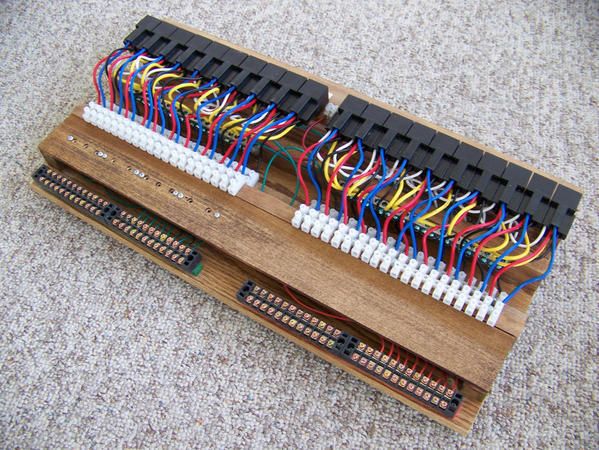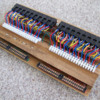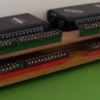This relay board contains individual power relays. See attachment.
The purpose of these separate relays is to limit the current through my MTH AIUs to about 1/2 ampere. Therefore the current necessary to control a turnout or power a block is provided by the separate relay and NOT the AIU. The Relay Board is designed to connect to my AIU Patch Board. (See also attachment)
Note: Every relay "circuit" is protected by a combination of circuit breakers and fuses including all turnout solenoids. Each track "block circuit" is also individually protected in case of a short circuit or overload. This means that any individual fault anywhere on the layout will be detected and cleared without affecting any other circuit.







